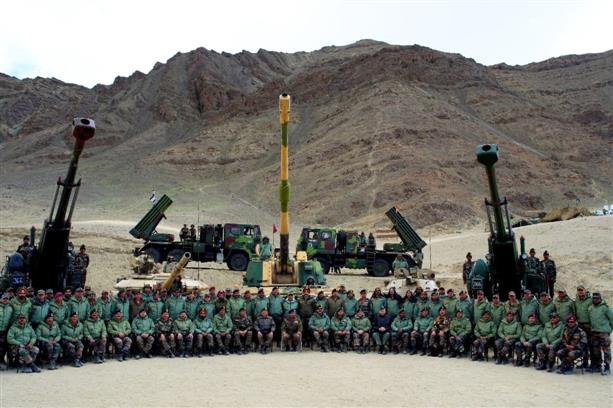The establishment of two armoured vehicle maintenance and repair facilities by the Army at altitudes exceeding 14,500 feet in Eastern Ladakh marks a significant milestone in military logistics and strategic preparedness. Positioned in Nyoma and the DBO sector, these facilities are now among the highest of their kind globally. This development not only underscores India’s commitment to maintaining robust defensive capabilities along the Line of Actual Control but also highlights the remarkable ingenuity required to operate in such harsh environments. The deployment of over 500 tanks and infantry combat vehicles (ICVs) in Eastern Ladakh follows the protracted standoff with China that began in April-May 2020. This area, with its unforgiving terrain and climatic conditions, poses substantial logistical challenges. The establishment of maintenance hubs at these altitudes is therefore a strategic necessity. By ensuring that tanks and ICVs remain operational without the need to transport them back to lower altitudes for repairs, the Indian Army can maintain a state of readiness that is crucial for rapid response in this volatile region.
Creating infrastructure at such high altitudes is a testament to the engineering prowess and logistical acumen of the Army and its support teams. The Nyoma and DBO sector facilities are designed to handle the repair and maintenance of sophisticated armoured vehicles, including T-90 and T-72 tanks, BMPs, and indigenous Quick Reaction Fighting Vehicles (QRFVs). These operations are complicated by extreme cold, reduced oxygen levels, and the remoteness of the locations. The ability to overcome these challenges speaks volumes about the advancements in military logistics and engineering. The strategic placement of these maintenance facilities directly contributes to the sustainability of armoured operations in Eastern Ladakh. Tanks and ICVs are pivotal in high-altitude warfare, offering significant firepower and mobility. However, their effectiveness is contingent upon regular maintenance to address the wear and tear exacerbated by the harsh conditions. The new facilities ensure that vehicles remain battle-ready, thereby enhancing the operational capabilities of the Army in the region. Moreover, the presence of these facilities minimises the downtime of critical military assets. Previously, any significant repairs required transporting the vehicles to lower altitudes, a time-consuming and logistically demanding process. Now, with the ability to conduct maintenance on-site, the Indian Army can maintain a higher operational tempo, which is crucial in a region where rapid mobilisation and deployment can be decisive.
The enhanced capability to maintain and operate armoured vehicles at such altitudes serves as a powerful deterrent against potential aggression. It sends a clear message that India is prepared and capable of defending its territorial integrity. This preparedness is vital in the context of the ongoing tensions with China, where the ability to project power and sustain operations in high-altitude regions can significantly influence the strategic balance. By bolstering its defensive infrastructure, India not only enhances its own security but also contributes to a stable balance of power in the region. This, in turn, can help prevent the escalation of conflicts and promote a more predictable and secure environment along the LAC.
Despite these advancements, maintaining operational efficiency at such altitudes is fraught with challenges. The extreme weather conditions, including severe cold and heavy snowfall, can disrupt operations and strain both personnel and equipment. Continuous innovation and adaptation are essential to overcome these hurdles. Key factor is sustained efforts. It underscores a strategic shift towards self-sufficiency and enhanced operational readiness in one of the world’s most challenging environments. As India continues to fortify its frontiers and prepare for future contingencies, these facilities will play a crucial role in ensuring that its armoured forces remain at the cutting edge of high-altitude warfare. In a region where geopolitical dynamics are continually evolving, the ability to maintain a robust and ready defence posture is indispensable. It is a testament to the enduring spirit of innovation and resilience that defines India’s military strategy in the 21st century.
Trending Now
E-Paper


